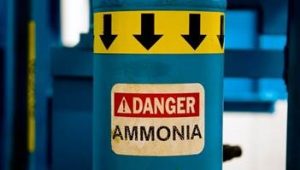
The Chesapeake Bay has long suffered from algae blooms, dead zones, and other effects on aquatic life that are caused by excess nitrogen and phosphorus pollution. The Total Maximum Daily Load (TMDL), often described as a “pollution diet” for the Bay, has resulted in significant pollution reductions, but further reductions will be necessary to restore the health of the Bay.
Ammonia, the pungent gas released from animal waste, is responsible for a significant fraction of the nitrogen load to the Chesapeake Bay each year. Airborne nitrogen is responsible for roughly one third of the nitrogen load. Historically, most of that nitrogen has been in the form of nitrogen oxides (NOx) from fossil fuel combustion and other sources. Clean Air Act regulations have produced steady declines in NOx, but ammonia has been increasing, and ammonia will soon be the dominant form of atmospheric nitrogen loads.
The largest source of ammonia emissions is livestock waste, and a large component of that source category comes from the factory farms that produce broiler chickens. Monitoring data from U.S. broiler operations show that broiler operations emit twice as much ammonia as EPA has traditionally assumed. A typical broiler operation on the Delmarva Peninsula emits roughly 20 tons of ammonia each year.


